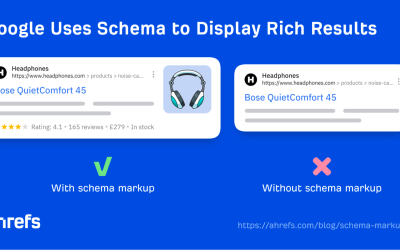Table of Contents
- 1 What is User Experience (UX)?
- 2 Understanding SEO
- 3 How User Experience Influences SEO
- 4 Optimizing User Experience for SEO
- 4.1 Keyword Research and Optimization
- 4.2 Improving Website Architecture
- 4.3 Enhancing Page Load Speed
- 4.4 Designing for Mobile Devices
- 4.5 Improving Navigation and User Flow
- 4.6 Creating Engaging and Valuable Content
- 4.7 Reducing Bounce Rates
- 4.8 Encouraging Social Sharing
- 4.9 Building Brand Trust and Authority
- 4.10 Optimizing for Local SEO
- 5 Measuring User Experience for SEO
- 6 User Experience and RankBrain
- 7 Common UX Mistakes That Negatively Impact SEO
- 8 The Future of UX and SEO
- 9 Conclusion
Have you ever wondered how user experience (UX) impacts SEO? Well, it turns out that the two are closely intertwined, with a strong emphasis on UX greatly influencing a website’s search engine ranking. In this article, we will explore the various ways in which user experience can affect SEO and why it is crucial for website owners to prioritize UX in order to optimize their online presence. From website speed and mobile-friendliness to user engagement and bounce rates, we will uncover the key elements of UX that can make or break your SEO efforts. So, let’s dive into the fascinating relationship between UX and SEO!
What is User Experience (UX)?
Definition of User Experience
User experience (UX) refers to the overall experience a user has when interacting with a website, application, or digital product. It encompasses the user’s emotions, perceptions, and behaviors during their journey with the product. A positive user experience involves creating intuitive interfaces, easy navigation, and relevant content that meets the user’s needs.
Importance of User Experience
User experience is crucial in today’s digital landscape. It directly impacts user satisfaction, engagement, and retention. A well-designed user experience can lead to higher conversion rates, increased brand loyalty, and improved customer satisfaction. In the context of SEO, a positive user experience can also significantly impact a website’s search engine rankings.
Understanding SEO
Definition of SEO
Search Engine Optimization (SEO) is the process of improving a website’s visibility and ranking in search engine results pages (SERPs). It involves optimizing various aspects of a website to make it more appealing to search engines and users alike. The goal of SEO is to increase organic traffic, attract relevant users, and improve the overall visibility of a website.
Importance of SEO
In today’s digital age, where millions of websites compete for attention, SEO is crucial for businesses and website owners. By optimizing their websites for search engines, they can rank higher in SERPs, attract more organic traffic, and gain a competitive edge. SEO helps increase brand visibility, build credibility, and drive targeted traffic, leading to higher conversions and business growth.
How User Experience Influences SEO
User Engagement and Dwell Time
User engagement metrics, such as dwell time (the duration a user spends on a webpage), have a significant impact on SEO. When users spend more time on a website, search engines perceive it as a sign of relevance and quality. Search engines strive to deliver the best results to their users, so they prioritize websites that keep users engaged with relevant and valuable content.
Website Performance and Load Speed
Website performance and load speed directly impact user experience. Slow-loading websites frustrate users and lead to higher bounce rates. Additionally, search engines take website performance into account when ranking websites. Websites that load quickly and provide a seamless browsing experience tend to rank higher in search results, improving their visibility and attracting more organic traffic.
Mobile-Friendliness and Responsiveness
With the increasing use of mobile devices, having a mobile-friendly website is essential. Mobile-friendliness improves the user experience by ensuring that the website displays correctly and is easy to navigate on smaller screens. Moreover, search engines prioritize mobile-friendly websites in their rankings. Optimizing for mobile devices not only enhances user experience but also positively impacts SEO.
Intuitive navigation and a clear site structure are crucial for a positive user experience. Websites with easy-to-use navigation menus and well-organized content make it easier for users to find what they’re looking for. Clear navigation and site structure also make it simpler for search engine bots to crawl and index the website’s pages, improving its visibility in search results.
Content Relevance and Quality
High-quality, relevant content is key to both user experience and SEO. By providing valuable and informative content that addresses users’ needs and queries, websites can establish themselves as authoritative sources in their respective industries. Additionally, search engines prioritize websites that offer quality content, as it aligns with their goal of providing the best results to users.
Reduced Bounce Rates
Bounce rate refers to the percentage of users who leave a website after viewing only one page. A high bounce rate indicates that users didn’t find what they were looking for or had a poor user experience. Search engines take bounce rates into account when determining the relevance and quality of a website. By offering a positive user experience and relevant content, websites can reduce bounce rates, improving their SEO performance.
Social Signals and Sharing
Social signals, such as likes, shares, and comments on social media, can indirectly impact a website’s SEO. When users find value in a website’s content and share it on social platforms, it increases the website’s visibility and drives more traffic. Furthermore, search engines consider social signals as an indication of content relevance and quality, which can positively influence rankings.
Brand Trust and Authority
User experience plays a vital role in building brand trust and authority. Websites that consistently provide a positive user experience and valuable content can establish themselves as trusted sources. Building trust and authority not only improves user engagement and loyalty but also positively impacts SEO. Search engines prioritize authoritative websites, considering them more reliable and relevant to users’ queries.
Local SEO Impact
For businesses with physical locations or those targeting local audiences, user experience has a significant impact on local SEO. This includes optimizing for local keywords, providing accurate and up-to-date contact information, and ensuring a seamless user experience for local visitors. By offering a positive user experience tailored to local users, businesses can improve their local search visibility and attract more relevant customers.
Optimizing User Experience for SEO
Keyword Research and Optimization
Keyword research is the foundation of SEO and user experience optimization. By understanding the keywords and phrases users use to search for relevant information, websites can create content that addresses their needs. Optimizing content with relevant keywords and maintaining a natural flow helps improve visibility and attract targeted traffic.
Improving Website Architecture
A well-structured website architecture enhances the user experience and makes it easier for search engines to crawl and index content. Creating clear and logical site hierarchies, using descriptive URLs, and implementing a user-friendly internal linking strategy improves user navigation and search engine visibility.
Enhancing Page Load Speed
Improving page load speed is crucial for providing a positive user experience. Minimizing file sizes, leveraging browser caching, and optimizing images and scripts can help reduce loading times. A faster website not only keeps users engaged but also signals search engines that the website delivers a seamless experience.
Designing for Mobile Devices
As mobile usage continues to rise, designing websites for mobile devices is essential. Implementing responsive design, adaptive layouts, and touch-friendly elements ensures a seamless experience across different screen sizes and devices. Mobile-friendly websites not only cater to the needs of mobile users but also meet the expectations of search engines.
Intuitive navigation and logical user flows are key to a positive user experience. Websites should have clear menus, easy-to-find search options, and prominent calls to action. By guiding users to valuable content and helping them complete desired actions, websites can improve user satisfaction and drive conversions, positively impacting SEO.
Creating Engaging and Valuable Content
User-centric, engaging content is crucial for both user experience and SEO. By understanding their target audience’s needs and preferences, websites can create content that resonates with users. Incorporating multimedia elements, using storytelling techniques, and providing actionable information enhances the overall user experience and increases the chances of content being shared and linked to, improving SEO results.
Reducing Bounce Rates
Reducing bounce rates involves providing users with relevant, engaging content and a seamless browsing experience. Websites should ensure that landing pages match users’ search intent, facilitate easy and intuitive navigation, and deliver valuable information. By meeting users’ expectations and providing a positive user experience, websites can lower bounce rates and improve SEO performance.
Encouraging Social Sharing
Incorporating social sharing buttons and encouraging users to share content can significantly impact SEO. When users find value in website content and share it on social platforms, it increases the content’s visibility and attracts more traffic. By optimizing content for social sharing, websites can enhance the user experience and generate social signals that contribute to improved SEO performance.
Building Brand Trust and Authority
Trust signals, such as customer reviews, testimonials, and security certifications, play a crucial role in user experience and SEO. By displaying trust indicators prominently, websites can instill confidence in users and establish themselves as trusted sources. Building brand trust and authority not only improves user engagement but also enhances search engine visibility and rankings.
Optimizing for Local SEO
For businesses targeting local audiences, optimizing for local SEO is essential. This involves incorporating location-based keywords, optimizing Google My Business profiles, including local contact information, and managing online reviews. Ensuring a positive user experience for local visitors through customized content and relevant information drives targeted traffic and improves local search rankings.
Measuring User Experience for SEO
User Behavior Metrics
User behavior metrics help measure the effectiveness of the user experience. Metrics such as time on site, page views per session, and conversion rates provide insights into user engagement, content relevance, and overall website performance. Analyzing user behavior metrics allows website owners to identify areas for improvement and make data-driven decisions to optimize the user experience for SEO.
Conversion Metrics
Conversion metrics, such as click-through rates, form submissions, and purchases, help gauge the effectiveness of the user experience in driving desired actions. Tracking conversion metrics allows website owners to measure the impact of UX optimizations on business goals. By continuously measuring and analyzing conversion metrics, websites can refine their user experience strategy for improved SEO results.
Mobile Performance Metrics
With the growing importance of mobile devices, monitoring mobile performance metrics is vital. Metrics such as mobile page speed, mobile-friendliness, and mobile bounce rates help evaluate the user experience on mobile devices. By addressing any issues identified through mobile performance metrics, websites can provide a seamless mobile experience and enhance their visibility in mobile search results.
Usability Testing
Usability testing involves observing and analyzing how users interact with a website to identify usability issues and opportunities for improvement. By conducting usability tests, website owners can gather valuable feedback about the user experience, identify pain points, and make informed decisions to optimize the website for improved SEO performance.
Heatmapping and Click Tracking
Heatmapping and click tracking tools provide visual representations of user behavior on a website. Heatmaps highlight areas of the website that attract the most attention, while click tracking reveals the areas users interact with. Analyzing these visual representations helps identify areas for improvement and optimize the user experience for better SEO results.
User Experience and RankBrain
What is RankBrain?
RankBrain is a machine learning algorithm developed by Google to help process and understand search queries. It uses artificial intelligence to interpret the intent behind a search query and deliver more relevant search results. RankBrain is designed to improve the overall accuracy and effectiveness of Google’s search results.
RankBrain’s Role in SEO
RankBrain has a significant impact on SEO as it influences how search results are delivered. By understanding and adapting to the user’s search intent, RankBrain strives to provide the most relevant and meaningful results. Websites that offer a positive user experience, relevant content, and valuable information align with RankBrain’s objective, improving their chances of ranking higher in search results.
How to Optimize for RankBrain
Optimizing for RankBrain involves creating high-quality, authoritative content that addresses users’ search intent. By conducting thorough keyword research and understanding users’ needs, websites can create content that aligns with RankBrain’s algorithm. Additionally, optimizing user experience factors such as engagement, mobile-friendliness, and page load speed helps improve the overall user experience and makes websites more favorable to RankBrain.
Common UX Mistakes That Negatively Impact SEO
A poorly designed website with cluttered layouts, confusing navigation, and outdated aesthetics can negatively impact the user experience. Difficult navigation and poor design discourage users from exploring a website, leading to higher bounce rates and decreased engagement. Search engines take these factors into account when determining search rankings, so it’s essential to prioritize a visually appealing and user-friendly design.
Slow Page Load Speed
Slow page load speed frustrates users and negatively impacts the user experience. Users expect websites to load quickly, and if a website is slow, they’re likely to leave and look for alternatives. Slow-loading websites also have higher bounce rates, indicating a negative user experience. Search engines consider page load speed as a factor when ranking websites, emphasizing its importance for SEO.
Lack of Mobile Optimization
In today’s mobile-centric world, not optimizing websites for mobile devices can be detrimental. Websites that aren’t mobile-friendly appear distorted, have difficult navigation, and offer a subpar user experience. With mobile usage surpassing desktop usage, search engines prioritize websites that offer a positive mobile experience. Failing to optimize for mobile can result in lower search visibility and decreased organic traffic.
Low-Quality or Irrelevant Content
Content quality is crucial for both user experience and SEO. Sites with low-quality or irrelevant content fail to engage users and provide value, leading to poor user experience. Thin content, keyword stuffing, and irrelevant information all impact the user experience negatively. Search engines prioritize high-quality content that satisfies users’ search intent, so it’s vital to create valuable and relevant content.
Intrusive or Distracting Ads
Excessive ads or intrusive pop-ups disrupt the user experience and can lead to high bounce rates. Users expect to access content quickly and easily, and intrusive ads slow down browsing and hinder access to information. Search engines take into account the number and placement of ads when ranking websites, as a poor ad experience affects overall user satisfaction.
Difficult or Confusing User Interface
A difficult or confusing user interface can frustrate users and negatively impact the user experience. Websites with complex navigation menus, unclear calls to action, or confusing layouts make it challenging for users to find what they’re looking for. Search engines consider user interface factors when ranking websites, as they directly affect user satisfaction and engagement.
Lack of Trust Signals
A lack of trust signals, such as customer reviews, security certifications, and contact information, can undermine the user experience. Users want to feel safe and trust the websites they visit. Without trust signals, users may doubt the credibility and legitimacy of a website, leading to a negative experience and increased bounce rates. Search engines prioritize websites that instill trust in users, making trust signals important for SEO.
Ignoring Local SEO Factors
For businesses targeting local audiences, ignoring local SEO factors can have a detrimental impact. Failing to optimize for local keywords, neglecting Google My Business profiles, and omitting local contact information can lead to poor user experience for local visitors. By not tailoring content and user experience to local users, businesses miss out on potential customers and lower their local search visibility.
The Future of UX and SEO
Rise of Voice Search
With the increasing popularity of voice assistants and smart speakers, voice search is rapidly becoming mainstream. Voice search relies heavily on user experience and delivering quick, concise, and accurate information. Websites that optimize for voice search by targeting conversational keywords and providing direct answers position themselves for future SEO success.
Mobile-First Indexing
Google’s shift to mobile-first indexing emphasizes the importance of mobile user experience. Mobile-first indexing means that Google predominantly uses the mobile version of a website’s content for indexing and ranking. Websites that offer a seamless mobile experience, fast page load speed, and responsive design will be prioritized in search results, ensuring their continued visibility and success in SEO.
Artificial Intelligence and Machine Learning
The integration of artificial intelligence (AI) and machine learning (ML) into search algorithms will continue to shape the future of SEO and user experience. AI and ML enable search engines to better understand user intent, deliver more personalized search results, and refine the overall user experience. Websites that leverage AI and ML technologies to optimize the user experience will have an advantage in search rankings.
User-Centric Algorithm Updates
Search engines will continue to prioritize the user experience in algorithm updates. User-centric updates focus on providing the most relevant, valuable, and user-friendly content to searchers. Websites that prioritize user experience factors, such as engagement, mobile optimization, and content quality, will be rewarded with higher search visibility and improved SEO performance.
Conclusion
User experience plays a critical role in SEO. By providing a positive user experience, websites can improve engagement, reduce bounce rates, and enhance overall user satisfaction. Optimizing user experience factors, such as website performance, mobile-friendliness, navigation, and content quality, not only improves SEO but also helps build brand trust and authority. As technology and user expectations evolve, continuously optimizing user experience will be essential for staying competitive and achieving better SEO results.














